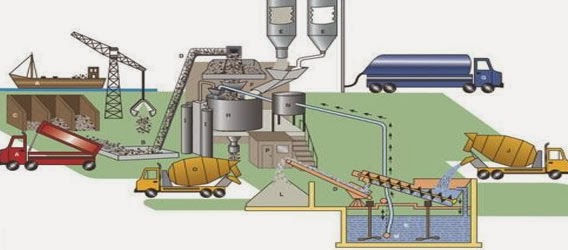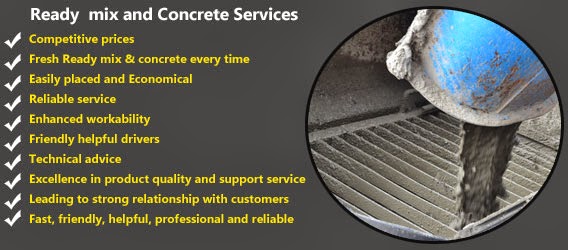 |
| Material Required for Ready Mix Concrete |
Admixture: A substance added to the basic
concrete mixture to alter one or more properties of the concrete; ie fibrous
materials for reinforcing, water repellent treatments, and coloring compounds.
·
Air-entraining admixtures (mainly used in
concrete exposed to freezing and thawing cycles)
·
Water-reducing admixtures, plasticizers
(reduce the dosage of water while maintaining the workability)
·
Retarding admixtures (mainly used in hot
weather to retard the reaction of hydration)
·
Accelerating admixtures (mainly used in cold
weather to accelerate the reaction of hydration)
·
Super plasticizer or high range water-reducer
(significantly reduce the dosage of water while maintaining the workability)
·
Miscellaneous admixtures such as corrosion
inhibiting, shrinkage reducing, coloring, pumping etc.
Aggregate: Inert particles (i.e. gravel,
sand, and stone) added to cement and water to form concrete.
Cement: Dry powder that reacts
chemically with water to bind the particles of aggregate, forming concrete.
Portland cement is typically used in concrete production.
Fly ash: Fly ash is a by-product from
coal-fired electricity generating power plants. The coal used in these power
plants is mainly composed of combustible elements such as carbon, hydrogen and
oxygen (nitrogen and sulfur being minor elements), and non-combustible
impurities (10 to 40%) usually present in the form of clay, shale, quartz,
feldspar and limestone.














